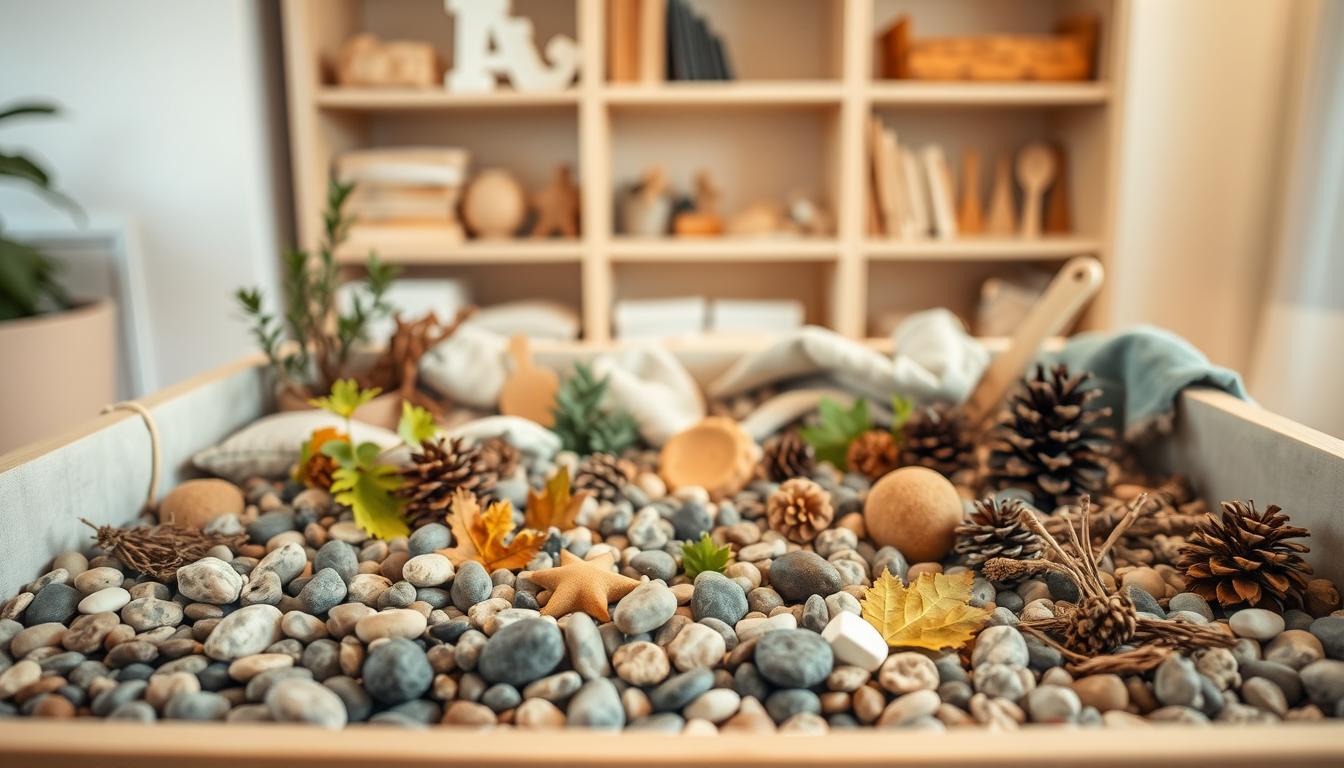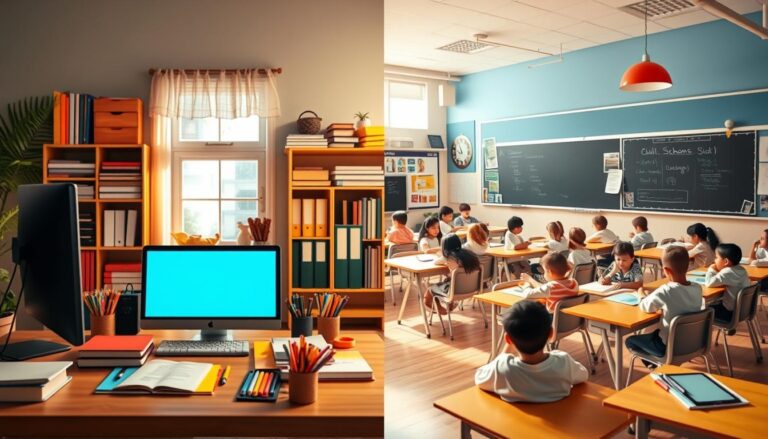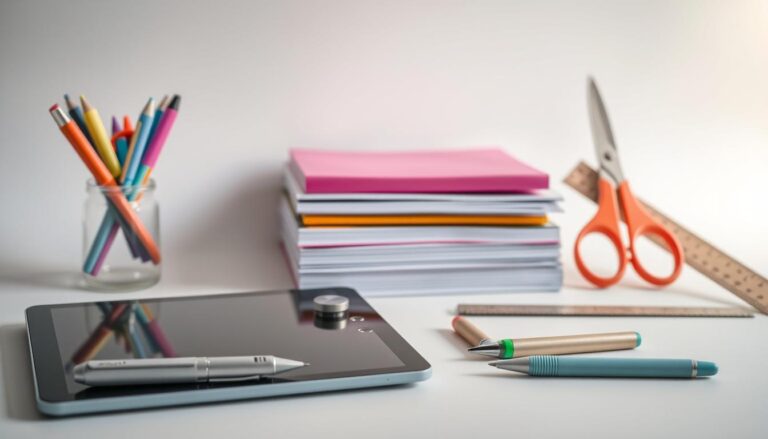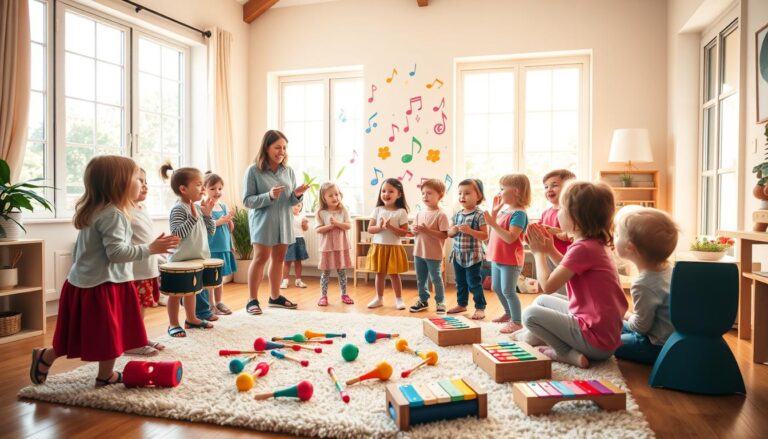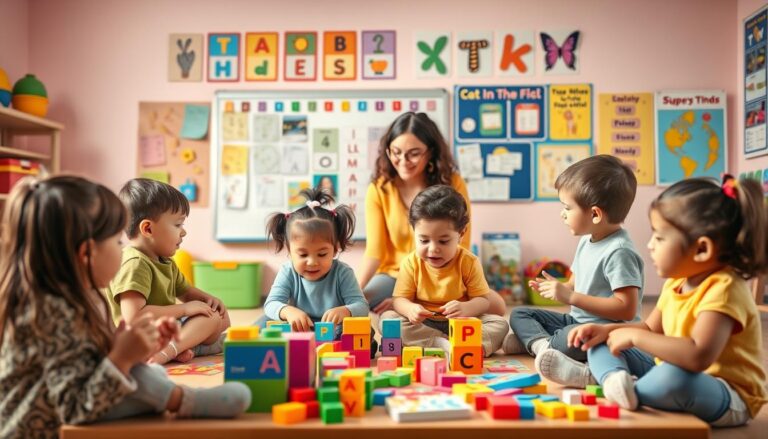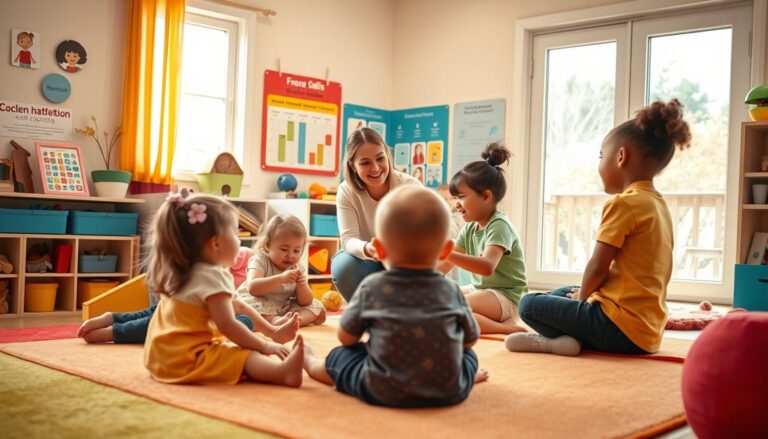Sensory Bin Ideas for Home Pre-School Activities
Have you ever wondered how a simple box filled with everyday items can spark endless curiosity and learning for your child? Sensory bins are more than just play—they’re a gateway to exploration and discovery. These creative setups are designed to engage young minds, making learning fun and interactive right at home.
We’ve gathered practical and imaginative ideas to help you create sensory bins that cater to your child’s developmental needs. From colorful rice to themed setups, these ideas are easy to replicate and perfect for fostering creativity. Whether it’s sorting, counting, or imaginative play, sensory bins offer a hands-on way to nurture your child’s growth.
Join us as we explore how these simple yet effective tools can transform learning into an exciting adventure for your little one. Let’s dive into the world of sensory play and discover how you can make it a part of your daily routine.
Understanding the Importance of Sensory Play
Engaging in sensory play helps children explore the world around them in meaningful ways. It’s a hands-on approach that encourages curiosity and learning. Through these experiences, kids develop essential skills while having fun.
Benefits for Child Development
Sensory play strengthens brain connections, helping children process information better. It also enhances fine and gross motor skills. Activities like pouring, stacking, or sorting improve coordination and dexterity.
Language development is another key benefit. As kids describe textures, sounds, and colors, they expand their vocabulary. Social skills grow too, as they learn to share and communicate during group play.
Safety and Supervision Tips
While sensory play is beneficial, safety is crucial. Always supervise children to prevent choking hazards. Use age-appropriate materials and avoid small objects for younger kids.
Ensure the play area is clean and free of sharp items. For messy play, lay down a mat or use a designated space. These simple steps make sensory play both fun and safe.
Creative Sensory Play Activities for Home
Simple household items can transform into engaging tools for young minds to explore. Tactile play with materials like rice, sand, and pasta offers a fun way for toddlers to connect with their environment. These activities not only entertain but also help develop essential skills.
Tactile Exploration with Rice, Sand, and Pasta
Using everyday materials, you can create a world of sensory discovery for your child. Rice, sand, and pasta provide diverse textures that stimulate the sense of touch. These items are safe, affordable, and easy to set up at home.
For example, colored rice can be used to teach sorting and counting. Sand offers a unique texture that toddlers love to scoop and pour. Pasta, with its various shapes and sizes, introduces concepts of cause and effect as kids explore different sounds and textures.
Here’s a quick comparison of these materials:
| Material | Texture | Benefits |
|---|---|---|
| Rice | Smooth, granular | Encourages sorting and fine motor skills |
| Sand | Gritty, malleable | Promotes pouring and imaginative play |
| Pasta | Varied shapes, firm | Introduces sound exploration and creativity |
These activities are not just fun; they also help toddlers understand their environment through direct sensory input. By engaging with these materials, kids develop motor skills and sensory perception in a holistic way.
Parents can easily create these setups with items already at home. This approach ensures a low-cost yet effective way to keep toddlers engaged and learning. Whether it’s the sound of pasta clinking or the feel of sand slipping through fingers, these experiences are both educational and enjoyable.
Preschool Sensory Activities
Engaging preschoolers in creative, hands-on projects can foster both learning and emotional well-being. These activities are designed to stimulate their senses while encouraging exploration and discovery. From DIY playdough to calming bottles, each project offers unique benefits for young learners.
DIY Playdough and Custom Sensory Bins
Creating homemade playdough is a simple yet effective way to engage preschoolers. Using safe, non-toxic ingredients like flour, salt, and food coloring, you can craft a tactile experience that promotes creativity. Add glitter or essential oils for extra sensory appeal.
Custom sensory bins are another versatile tool. Fill a container with items like colored rice, sand, or pasta to emphasize different textures and colors. These bins encourage sorting, counting, and imaginative play, making them a valuable learning resource.
Here’s a quick comparison of popular sensory bin fillers:
| Material | Texture | Benefits |
|---|---|---|
| Colored Rice | Smooth, granular | Promotes sorting and fine motor skills |
| Sand | Gritty, malleable | Encourages pouring and imaginative play |
| Pasta | Varied shapes, firm | Introduces sound exploration and creativity |
Bottle Sound Play and Calming Bottles
Bottle sound play is an excellent way to introduce auditory learning. Fill a container with items like beads, rice, or small bells to create unique sounds. Shaking and listening to these bottles helps preschoolers understand cause and effect while enhancing their auditory senses.
Calming bottles are another effective tool for emotional regulation. Using clear glue, water, and glitter, these bottles create a mesmerizing effect when shaken. They help preschoolers manage overwhelming feelings and promote mindfulness during playtime.
By incorporating vibrant colors and varied items, these activities provide a rich sensory experience. They are easy to set up and offer endless opportunities for learning and growth.
Outdoor Sensory Exploration Ideas
Outdoor play offers a unique way for children to connect with nature while developing essential skills. It’s a hands-on experience that engages all senses, from the feel of sand to the smell of fresh flowers. These activities not only entertain but also help kids understand the world around them in a meaningful way.
Sandbox and Mud Kitchen Fun
Sandboxes and mud kitchens are perfect for tactile exploration. Kids can use their hands to build, dig, and create, enhancing their motor skills. Natural materials like sand and mud provide a safe and engaging way to learn about textures and cause and effect.
Mud kitchens, in particular, encourage imaginative play. Children can mix, pour, and experiment with different materials. This type of play fosters creativity and problem-solving while connecting them with the natural world.
Garden and Nature-Inspired Projects
Gardening introduces children to a variety of smells and textures. Planting flowers or vegetables helps them understand growth cycles and the importance of care. Activities like touching soil or smelling herbs stimulate their senses and expand their vocabulary.
Nature-inspired projects, such as leaf rubbings or rock painting, combine creativity with sensory exploration. These activities encourage kids to observe and interact with their environment, fostering a deeper connection to the world around them.
| Activity | Materials | Benefits |
|---|---|---|
| Sandbox Play | Sand, shovels, buckets | Enhances motor skills and creativity |
| Mud Kitchen | Mud, water, kitchen tools | Promotes imaginative play and problem-solving |
| Gardening | Soil, seeds, plants | Introduces smells, textures, and growth cycles |
| Nature Crafts | Leaves, rocks, paint | Encourages observation and creativity |
Outdoor sensory activities provide a rich learning experience for children. They encourage exploration, creativity, and a deeper understanding of the natural world. By incorporating these ideas, parents can create meaningful and engaging playtime for their kids.
Messy Play with Food and Water
Exploring textures through food and water can be a delightful way for kids to learn and grow. This type of play encourages creativity while helping children understand different materials in a hands-on way. From squishing yogurt to building with edible mud, these activities are both fun and educational.
Playing with Food for Textural Learning
Using food in playtime is a great way to introduce kids to various textures. Activities like finger painting with edible paints or cooking-based projects allow children to explore while developing fine motor skills. Homemade setups, such as colored rice or mud, provide safe and engaging materials for tactile learning.
Here are some ideas to get started:
- Create edible art projects using paper and safe food items.
- Use rice or mud to teach sorting, pouring, and building.
- Introduce water play with containers and utensils for pouring experiments.
These activities not only entertain but also help children process sensory information. For example, playing with mud can reduce stress and improve focus. It’s a great way to combine learning with fun.
Timing is key to ensuring a positive experience. Allocate time for supervised play and set up a designated area to manage mess. This approach keeps the activity enjoyable while maintaining safety.
By incorporating food and water into playtime, kids gain a better understanding of textures and develop essential skills. It’s a simple yet effective way to make learning an adventure.
Multi-Sensory Sound and Music Experiments
Sound and music are powerful tools that can transform learning into a multi-sensory adventure for your little one. These activities engage the auditory senses while complementing tactile and visual play. By incorporating sound experiments into your day, you can boost creativity and language skills in a fun and interactive way.
DIY Sound Tubes and Shakers
Creating DIY sound tubes and shakers is a simple yet effective way to introduce auditory play. Use household items like rice, beans, or pasta to fill containers. These materials produce unique sounds that captivate young minds.
Here’s a quick guide to making your own sound tools:
- Fill a plastic bottle with rice for a soft, soothing sound.
- Use beans or pasta for a louder, more distinct noise.
- Decorate the containers with colorful tape or stickers for added appeal.
These DIY tools help children explore cause and effect while enhancing their listening skills. They’re perfect for a day of creative play and learning.
Interactive Music and Storytelling
Interactive music sessions can bring stories to life. Use simple instruments like drums or shakers to create sound effects that match the narrative. This approach encourages active participation and boosts language development.
For example, use a drumbeat to mimic footsteps or a shaker to represent rain. These activities help children connect sounds with actions, improving their understanding of letters and words.
Here’s a comparison of popular sound tools:
| Tool | Sound | Benefits |
|---|---|---|
| Rice Shaker | Soft, soothing | Encourages focus and calmness |
| Bean Shaker | Loud, distinct | Enhances auditory discrimination |
| Pasta Tube | Varied, rhythmic | Promotes rhythm and coordination |
By combining sound with storytelling, you create an immersive experience that engages multiple senses. These activities are not only fun but also foster cognitive and creative growth.
For more ideas on engaging your little one in multi-sensory learning, explore our preschool curriculum designed to support holistic development.
Innovative DIY Projects for Sensory Learning
Transform everyday materials into engaging tools for creative learning. DIY projects are a fantastic way to combine artistic expression with hands-on exploration. These activities not only entertain but also help children develop essential skills in a fun and interactive way.
Homemade Musical Instruments
Creating musical instruments at home is simple and rewarding. Use items like empty containers, rice, and glue to craft shakers or drums. These projects introduce kids to sound exploration while enhancing their creativity.
For example, fill a plastic bottle with rice to make a soothing shaker. Decorate it with colorful tape for added appeal. This activity helps children understand cause and effect while improving their auditory skills.
Art Projects for Creative Exploration
Art projects allow kids to explore mess in a controlled environment. Use glue, paper, and safe materials to create collages or paintings. These activities encourage self-expression and fine motor development.
One idea is to make a texture board using fabric scraps and glue. This project introduces different textures, helping kids expand their sensory vocabulary. It’s a great way to combine learning with fun.
| Project | Materials | Benefits |
|---|---|---|
| Shaker | Rice, plastic bottle, glue | Enhances auditory skills and creativity |
| Texture Board | Fabric scraps, glue, cardboard | Introduces varied textures and fine motor skills |
| Collage | Paper, glue, safe materials | Encourages self-expression and focus |
These DIY projects are designed to be completed at home with minimal preparation. They offer maximum learning benefits while keeping kids engaged. For more ideas, explore our DIY sensory activities to support your child’s holistic development.
Conclusion
Discover how simple, hands-on projects can unlock a world of creativity and learning for children. Throughout this article, we’ve explored the essential benefits of sensory activities, from fostering motor skills to enhancing cognitive growth. Each idea, including bottle-based projects like calming bottles, offers a unique opportunity to engage young minds.
We encourage you to try these sensory play activities at home. Whether it’s creating DIY sound tools or exploring textured materials, every activity is designed to inspire both fun and development. These experiences not only entertain but also build critical skills that last a lifetime.
By prioritizing these ideas, you can create enriching learning environments for your child. Let’s embrace the power of hands-on exploration and watch as it transforms everyday moments into meaningful milestones.

